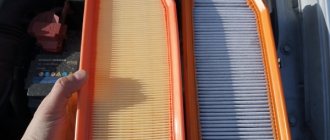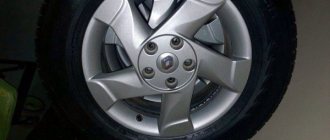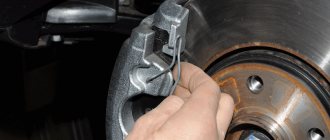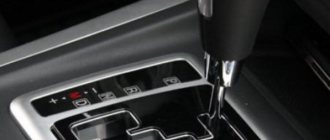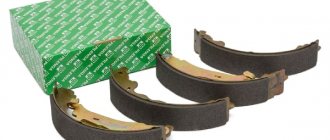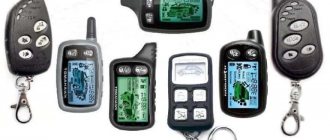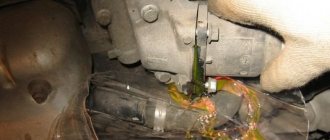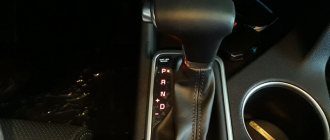Since its appearance on the market, the Renault Duster crossover has quickly begun to gain popularity due to its favorable balance of technical characteristics, level of equipment and affordable price. This car is based on a reliable and time-tested platform on which the company’s other bestsellers - Renault Logan and Renault Sandero - are built.
As for the transmission, the most popular option is both the all-wheel drive Duster with a manual transmission and the version with automatic transmission. We also note that the newest version with a robot box is gaining popularity.
Next, we will talk about what an automatic transmission is on an all-wheel drive Duster, what type of automatic transmission is on this car, what type of robotic gearbox is installed on a Duster, and also what to look for when choosing a Duster model with an automatic or a robot.
Transmission care
In order for the manual and automatic transmissions of Renault Duster to exhaust their service life with minimal problems and costs, the gearbox needs care.
The main thing is to check the oil level immediately after purchasing the car. There were a lot of complaints about banal underfilling at the factory, especially in the manual transmission. To lift the car horizontally (not with a jack), find the inspection hole plug on the front wall of the crankcase and unscrew it. The oil level should be level with the bottom edge of the hole. If not, then you need to top it up.
But sometimes, with a very long mileage, extreme use, or after replacing the oil seal, you will have to change or fill in a new one.
The oil is drained through the hole at the bottom of the crankcase and filled with a special syringe through the control hole.
The automatic will fit ATF RENAULTMATIC D3 SYN.
Otherwise, it’s enough to look at the appearance of the crankcase and ring the bells only if you find oil leaks from under the gasket or oil seal. Often, drips on the crankcase are confused with splashes of another nature. Transmission oil is red-brown in color. If the dirt makes it difficult to determine the color, clean off the dirt and drive at low speed for a couple of kilometers on asphalt and look at the color of the fluid, if there is any there at all.
Renault Duster 2.0 with automatic transmission 44
Renault Duster with a 2.0 engine
Duster (Duster/Dacia) is a fairly simple technological car: it does not have innovative solutions, but the demand for it is growing. The fact is that this is a practical car, perfect for city use, as well as for trips outside the city. The endurance of the equipment makes it a reliable companion in any conditions. This car has fairly high performance both for off-road use and for driving in city traffic, where maneuverability and the ability to quickly pick up speed are required.
Pros and cons of the model
There are different models with all-wheel drive and front-wheel drive, different engine sizes and manual or automatic transmission. Renault Duster 2.0 with automatic transmission is especially popular, since this car is perfectly suited for life in the city, but such a car is not suitable for everyone on the highway. The fact is that Duster's automatic transmission operates with some retardation, which creates certain difficulties when overtaking. This car loves a calm, measured ride. No matter how paradoxical it may seem, a Duster with an automatic transmission performs excellently off-road (see video). At low speeds, the transmission shifts on time and creates a comfortable driving experience. The driver will not have to think about which gear to choose, and the automatic will perfectly cope with the task assigned to him.
A Renault Duster 2.0 with automatic transmission consumes approximately the same amount of fuel as a similar car with a manual transmission. The difference is not so significant, so it’s not worth buying a manual to save money. However, if you do not plan to spend a lot of money on gasoline, then the Duster is not the most economical car in this regard. For example: the all-wheel drive version consumes approximately 15 liters per 100 kilometers on a combined cycle. The manufacturer has managed to achieve a good balance, and a car with all-wheel drive and an automatic transmission does not consume much more fuel than a version with front-wheel drive.
Reviews of the Renault Duster with a 4x4 automatic transmission are generally good, but many users warn that using such a vehicle off-road should be done with caution. The reason lies in the design features of the coupling
If the clutch overheats, the rear-wheel drive of the car will stop working. However, this will not disable the car, and it will be able to move on front-wheel drive, which it will switch to on its own. The rear-wheel drive will not be lost forever: when the clutch cools down, it will engage on its own. Most often, overheating of the clutch occurs in severe off-road conditions, when the car slips for a long time in sand, mud or snow. Still, the Duster is more focused on city conditions and light off-road conditions, although it has a fairly high ground clearance, which allows it to get through difficult conditions, but this car should not be considered a full-fledged all-terrain vehicle.
You can read detailed reviews about Renault Duster with automatic transmission 4×4 on our website. Owners of these cars from all over the country leave their impressions and share the problems they encountered while operating the car. If we analyze them, we can conclude that Renault still managed to create an inexpensive city car with off-road capabilities. It does not require expensive maintenance and can forgive beginners what more complex equipment cannot forgive. This durable and reliable car, of course, is not without its shortcomings, but it fully deserves its popularity. Some owners write that the car is easy to maintain, and they repair it themselves, which is a big plus for Duster, since if it breaks down in the forest, it can be repaired on their own.
Video review of the model with automatic transmission 2.0 and 4×4:
Reviews about the Renault Duster with a 4x4 automatic transmission and about a car with front-wheel drive are generally similar, because the cars differ only in some technical characteristics. In general, their design is very similar, and they require the same care. Fuel consumption also differs not so significantly. Without a doubt, the all-wheel drive version performs much better off-road.
- News
- Useful
- Do it yourself
- Adviсe
- Reviews
- All articles
- Contacts
- Advice from a car lawyer
- Advice from a car lawyer. Part 2
- Terms of use
- Privacy Policy
- Auto lawyer online for free
- List of official Renault dealers
- Competitions
- Terms of advertising on the DusterAuto.ru project
- Form of car purchase and sale agreement
2019 All about Renault Duster: photo and video reviews from Renault Duster owners
Renault Duster 4x4 automatic
Renault Logan Renault Logan repair and maintenance Replacement of silent blocks of rear suspension arms
Renault Duster does not have any technological innovative solutions, but despite this, the demand for it is growing and growing. Convenience, practicality, comfort, and at the same time excellent appearance - all these qualities are present in this car. On the website page you can see photos of the Renault Duster interior, and photos in general. Renault Duster has a “twin brother” - this is the Dacia Duster, which came out 1.5 years earlier than it. And, in fact, it has already become boring to car enthusiasts, which means that Renault Duster has come to the fore.
City car or not?
Buyers give greater preference to this car with front-wheel drive and with an automatic transmission. This shows that the Duster is still more of a city car, but with certain trim levels it is also perfect for off-road use. If you have an automatic transmission, then some problems may arise when driving on the highway. For example: you will have the opportunity to overtake someone on the highway, you will naturally begin to press harder on the gas, but then a problem will arise - you will hear an impossible sharp sound that can spoil your mood a little, and you will have a feeling as if something heavy was tied to the back of your car. It is in such a situation that you just want to switch to manual transmission and drive calmly along the highway, and at the right moment overtake other cars, if you want to. But for off-road use, an automatic would be a very good choice. Due to the “inhibition”, you will feel more than comfortable.
Fuel consumption 4x4 with automatic transmission
In terms of fuel consumption, for people who are careful about their finances and who know how to count their money, the Duster will not be the best option, since a test drive showed that it consumes approximately 15 liters per 100 km. It is believed that all-wheel drive and automatic transmission are the ideal combination. The majority, of course, thinks so, but there are also people who value manual transmission more than automatic transmission and make their choice in favor of manual transmission. This year, Renault Duster sold at a frantic pace, the sales figure was 75,000, and many more are still queuing to buy this car.
Be careful with all-wheel drive
The all-terrain vehicle, that is, the Renault Duster 4x4, will work until the clutch overheats, and after that it will switch to front-wheel drive. Of course, returning to all-wheel drive is entirely possible, but only when the clutch has cooled down. Overheating of the coupling occurs in conditions where there is dirt, sand, snow, and the like.
Price and technical specifications
The minimum price for Renault Duster automatic 4x4 is 675,000 rubles, in the Expression 4x4 2.0 automatic transmission configuration4. Now, as for the technical characteristics. then they fully satisfy the desires of buyers. Engine: 2.0 16v. Automatic transmission with 4 gears. This car has a sufficient number of options. Expression 4×4 2.0 automatic transmission4. Privilege 4×4 2.0 AKP4, Luxe Privilege 4×4 2.0 AKP4. For current information on prices and options, see here.
When will the Renault Duster 4x4 with automatic be available?
But many people are interested in the question: when will the Renault Duster 4x4 with an automatic transmission appear? For some time now, this issue remained hanging, but now we can say for sure that an all-wheel drive Duster with an automatic transmission will go on sale this year.
Turning on all-wheel drive
First, let's consider not the technical side of the issue, but the functional one. Since modern automotive trends tend to reduce fuel consumption, switches from all-wheel drive to regular drive are often installed on cars. Renault Duster has not lost this useful functionality. Thus, a switch washer is placed in the car interior, which allows you to turn on different modes. Let's look at the question in more detail:
- Lock function. This is exactly all-wheel drive. It blocks the distribution clutch and puts a forced load on all the axles of the car. When using the Lock mode, it is not recommended to drive faster than 70-80 km/h, so as not to cause damage to the locking clutch.
- 2WD function. The name itself speaks for itself. This mode engages only front-wheel drive and is optimal for highway driving.
Electric clutch button in “2WD” mode
- AUTO function. The most common mode, from which drivers usually do not switch to others. The ECU controls all processes associated with the operation of the drives, and itself switches to the desired one, in certain conditions. Thus, fuel savings occur, since only front-wheel drive operates on the highway, and all-wheel drive is used off-road, where necessary.
Electric coupling button in “AUTO” mode
Thus, it is clear that both the control unit and the driver himself can choose which mode to drive.
The principle of operation of all-wheel drive on Renault Duster
If we talk about the principle of operation of rear-wheel drive, it is necessary to understand some technical and design features of the Renault Duster. In the case of front-wheel drive, all torque goes through the CV joints to the front wheels. How does the rear one work?
In this case, the car is equipped with a transfer case, which redirects torque to the rear wheels. The system was invented quite a long time ago, back in the 50s, but the principle has remained to this day, although these devices are being improved all the time.
Classic all-wheel drive scheme
A clutch is installed in the rear gearbox of the Renault Duster, and if it is blocked, the rear drive does not work.
It can be turned on either forcibly by the driver or using the ECU. Let's look at everything more simply and clearly: the engine supplies torque to the gearbox, and from it it goes to the distribution box.
Detailed diagram of all-wheel drive on Duster
Through the cardan shaft it goes to the rear gearbox, which contains a clutch-regulator for engaging the rear drive. If it is on, then all-wheel drive works, if off, then only front-wheel drive. The rear gearbox has its own oil, which requires replacement.
Recommendations
Let us remind you once again that you should not forcefully use the clutch-switch for a long period of time, since it can fail under power load. Therefore, AUTO mode is considered the most optimal to use.
MK6
Communities Repair and Operation of LPG Blog Injectors on Lovato
Renault TL8 is distinguished by the fact that it has a cable-driven gear shift and does not transmit vibration to the handle. The manual transmission is somewhat more complicated, with an increased number of gears, and the fact that it transmits torque not only to the front wheels, but also to the rear wheels as needed. Renault's rear-wheel drive is normally disabled, but the mechanism constantly transmits torque to the cardan. As soon as the front wheels begin to slip, the electromagnetic clutch located in the rear gearbox engages the rear drive.
Due to the fact that Duster does not have a transfer case in the full sense of the term, Renault engineers decided to recalculate the gear ratios of the mechanical gears so that the first one becomes reduced. Therefore, in normal road conditions, it is customary to start driving a Duster at second speed.
Gear ratio:
- first – 4.46;
- second – 2.59;
- third – 1.74;
- fourth – 1.29;
- fifth – 1.03;
- sixth – 0.81;
- rear – 3.09.
Robot box for Renault Duster
Another version of the Duster with automatic transmission is the Renault Duster EDC, released in 2021. Unlike its predecessors, this is no longer a “classic” automatic, but a robotic gearbox. Renault Duster with a robot received an Efficient Dual Clutch (EDC) robotic gearbox with two clutches (similar to the updated Renault Captur, etc.)
For the Renault Duster, such a box is available exclusively with a 1.5-liter turbodiesel engine producing 110 hp, as well as in a front-wheel drive version. The EDC gearbox on the Duster changes gears rather harshly (especially the transition from 1st to 2nd), there are slight dips and delays when the gas pedal is sharply pressed.
However, in the case of smooth driving, the robot shifts almost imperceptibly both up and down, keeping the diesel engine speed in the maximum torque range.
A manual semi-automatic mode is also available, in which the driver can change gears independently. At the same time, recommendations are displayed on the instrument panel when it is better to change gear.
The robot also “forgives” mistakes, preventing the driver from shifting to a gear that is too high or low, taking into account the inappropriate speed of the vehicle. The transmission will also switch to lower gears when you press the gas pedal hard and activate the kick-down mode.
Also, the version with the robot received a hill start assist system, which helps avoid rolling back when starting off. Fuel consumption for the Duster EDS is stated to be even lower than for the “mechanics”. If you don’t look at the passport data, in practice, even with active driving, a car with such an engine and gearbox consumes only 6.5 liters of diesel per 100 km. around town.
As for the shortcomings, there are no clear statistics on the model yet, taking into account its novelty. In a number of cases, rapid wear of the clutch packs has been noted, however, such breakdowns are rare and are repaired under warranty. Further problems will only appear over time, as is the case with any other car that has recently entered the market.
LET'S GO! —
12 best tires for Renault Duster
heard one of the authors in response to the thoughtful reasoning outlined above. - All this is correct, but now take this trunk and take it to that Duster over there! When, instead of the usual foreign test drive, Za Rulem offered to take part in driving the car to Moscow, doubts arose only about the choice of route. In order to be on time with the material for this issue, I had to abandon the idea of coming to Russia in a Duster. We preferred one and a half thousand kilometers of Spanish-French highways and a small but indicative part of the prairies... or whatever they call it, where you drive off the asphalt.
Another sign is on the parting panel: the symbols D and 4WD LOCK.
Another sign is on the parting panel: the symbols D and 4WD LOCK.
Another sign is on the instrument panel: symbols D and 4WD LOCK
To say that the all-wheel drive Duster with an automatic transmission immediately stands out against the background of its front-wheel drive older brother is to sin against the truth. Set the mode to 2WD - and here you have the same car. Go and feel how much the gear ratios in the transmission have been changed (answer: increased by about 5%).
By the end of the second day, consumption measured at 10.2 l/100 km at an average speed of 72.9 km/h. It could have been smaller, but for this the “automatic” lacks a couple of steps. “Duster” is by no means a testing ground for new technical solutions; it tries on time-tested (read: inexpensive) units.
The trunk of the 4x4 version is 67 liters smaller because it has a higher raised floor. But the spare tire is placed directly under it, and not fastened outside in the rear overhang. Getting it out of there, much less putting it away, is a dubious pleasure.
The trunk of the 4x4 version is 67 liters smaller because it has a higher raised floor. But the spare tire is placed directly under it, and not fastened outside in the rear overhang. Getting it out of there, much less putting it away, is a dubious pleasure.
The trunk of the 4x4 version is 67 liters smaller because it has a higher raised floor. But the spare tire is placed directly under it, and not fastened outside in the rear overhang. Getting it out of there, much less putting it away, is a dubious pleasure.
When overtaking, the automatic transmission decisively shifts to a downshift, forcing the engine to howl in an attempt to accelerate the car. Alas, its efforts are lost somewhere between third and fourth gears, so the sluggish advance doesn't match the noise effects at all. This is where you should look at the speedometer and make sure that 120 is not your pace with the Duster. To be fair, in the Russian speed range overtaking is much more dignified.
The history of the appearance of automatic transmission on Renault Duster
Initially, this car was produced in three trim levels, then two more were added to them. Thus, until 2013, the car was produced in front-wheel drive and all-wheel drive versions, and all-wheel drive versions were equipped only with a five-position manual transmission. At that time, there were Dusters with both automatic and manual transmissions, both in single-wheel drive and all-wheel drive configurations.
The Duster automatic transmission handle looks quite impressive, but over time you get used to it and even feel somewhat comfortable with a fairly high seating position in the driver’s seat.
In 2013, the model was updated, which was undertaken by Russian designer Evgeny Tkachev. The update affected not only the exterior and interior; one additional equipment was also added: Renault Duster 4×4 automatic, where a 4-position automatic transmission acted as a gearbox. Along with this configuration, the car is also available with a five-speed manual transmission for the Russian market.
Automatic transmission specifications
Renault Duster with a 4-position automatic transmission is paired only with a 2.0 liter gasoline engine with a power of 143 hp. and only in the all-wheel drive version of the car. Renault Duster 2.0 automatic is equipped with a rather old hydromechanical automatic gearbox, which was installed in Sandero and Logan. But, despite the old design, Renault engineers were able to choose the right gear ratios, thanks to which the car is able to accelerate quite quickly and reach maximum speed. In fact, this gearbox is a modernization of the Logan/Sandero automatic transmission. The fuel consumption of the Renault Duster 2.0 with an automatic transmission is approximately 30% higher than that of its manual counterparts.
Duster's 4-position automatic transmission is in many ways identical to the 6-position manual transmission from Renault, however, an additional gearbox with a tail appears in the automatic transmission. The tail rotates constantly, more precisely until the moment the wheels in front spin, a driveshaft is attached to the tail, which transmits torque to the rear gearbox to the wheels at the back. The rear-wheel drive is connected using an electromagnetic clutch located in front of the gearbox.
Duster gear ratios differ in the following values:
- 1st speed – 2.727;
- 2nd – 1.499;
- 3rd – 1.0;
- 4th – 0.711;
- Reverse gear – 2.457.
The maximum speed that a Duster with an automatic transmission can reach is 174 km per hour, acceleration from 0 to 100 is carried out in 11.5 seconds. The all-wheel drive version with an automatic transmission is a rather power-hungry car today, albeit with significantly lower fuel consumption than its competitors. So, the car consumes in single-drive mode:
- In the city - 11.0-11.6 liters for every 100 km of driving;
- On the highway - 7.0-7.4 liters;
- Mixed mode - 8.7 l.
When rear-wheel drive is connected, the car becomes more power-hungry by about 25-30%, depending on the type of soil.
Advantages
Renault Duster with automatic transmission is an excellent car for its price. Thus, versions of cars with automatic transmission but with front-wheel drive, which were produced in the Russian Federation before 2013, were as simple as possible in design and maintenance, in addition, the price for maintenance of this part of the crossover was not as high as that of competitors. It is worth noting that in all-wheel drive versions, the automatic transmission is also quite economical to maintain; in addition, the car has good dynamics at the start and throughout the entire journey. It is also important to note that the all-wheel drive Renault Duster has the function of automatically switching between front-wheel drive and all-wheel drive when the clutch overheats, which protects both the automatic transmission and the entire car from serious damage.
Flaws
A Duster with automatic transmission is not only a well-balanced budget crossover, it also has a whole set of disadvantages, including:
- Quite high fuel consumption in city driving;
- Automatic transmission sluggishness when changing gears on the highway;
- The presence of strange squeaks and noises when changing gears at medium speeds.
Despite all the disadvantages, this car is one of the most desirable in the Russian Federation.
Alternative oil brands
There are alternative options that can be filled into the Renault Duster automatic transmission, one of them is ATF 4HP20 AL4, which is produced by the French company Mobil for the Peugeot-Citroen concern.
This oil is suitable for 4-speed automatic transmission ZF 4HP20, which is installed on European Peugeot, Renault, Citroen cars with an engine capacity of 2 liters and above.
ATF 4HP20 AL4 are also suitable for automatic transmission DP0 (AL4), since the ZF 4HP20 transmission is its next modification, but only with a higher torque of 330 Nm.
DP0 has a torque of only 210 Nm, since it is designed for engines with a volume of less than 2 liters (1.4/1.6).
But manufacturers electronically limited this indicator in order to reduce the load on the automatic transmission and ensure its stable operation until overhaul, and this is 150 - 200 thousand km.
Since ZF 4HP20 boxes operate under heavy loads, it is recommended to fill them with another brand of oil - LT 71141. This is a different specification that differs from DEXRON III. The oil has also proven itself well on DP0 gearboxes.
LT 71141 - yellow in color, most likely this is the oil that owners of front-wheel drive and all-wheel drive Renault Dusters observe when draining from DP2 and DP8 boxes. And since the ELF RENAULTMATIC D3 SYN is red, surprise arises. Here the answer is simple: LT 71141 was filled at the factory. And why, read on.
Despite the fact that LT 71141 is a semi-synthetic oil, it is based on a higher quality base and is positioned higher than DEXRON III and is designed for a longer service life. It oxidizes less, withstands loads better and pumps well in winter
And this is important not only for ZF 4HP20 boxes, but also for DP0 (DP2, DP8)
Therefore, the PSA concern still recommends filling automatic transmissions with higher quality oils specification LT 71141, and not DEXRON III.
Those. DEXRON III is the minimum quality of oil that can be poured into a Renault Duster 2 automatic transmission.
A complete replacement will take 7 liters, a partial replacement will take from 3 to 4. It all depends on the type of automatic transmission installed. Renault Duster with 1.4/1.6 engines is equipped with a DP0 transmission, and with 2.0 liter engines - DP2 and DP8.
The latest types of automatic transmissions have more clutches, which means the volume of oil during partial replacement will be smaller.
In some stores, instead of ELF RENAULTMATIC D3 SYN, you may be offered synthetic ATF ELFMATIC G3 SYN (sometimes mineral water). It also complies with the DEXRON III specification.
You can learn more about this brand of transmission fluid here https://autotopik.ru/rukovodstva/Renault/ATF_ELFMATIC_G3_SYN.pdf.
But the manufacturer does not recommend pouring this oil into the second generation Renault Duster automatic transmission.
Although many owners of first-generation cars pour this oil into the automatic transmission and do not complain.
Owners' opinions
Ivan, driving experience 11 years
I've been driving a Duster for six months. I’m already used to it, but the automatic machine on the Duster behaves peculiarly. If you block the center clutch, then, in theory, manual control mode is activated. But the automatic transmission does not shift to upper gears, only at a very smooth speed, for example, when it is necessary to drive up a hill under pressure. But if you press the gas a little, it will drop one gear, or even two.
In the same way, when exiting, the automatic transmission increases the gear back, making it impossible to slow down. Before the climb, I accelerate the Duster and go with a reserve speed in the highest fourth gear. I add more gas, but the electronics perceive it differently and reset the gear to third. The engine roars, the tachometer needle goes off scale, but the speed does not increase
I noticed that reviews from other owners describe similar problems.
The service station recommended waiting for the new firmware.
In other standard situations, the automatic transmission works quite decently, but thoughtfully.
Konstantin, driving experience 5 years
I purchased Duster in September 2015. I drove 6,000 km in six months. In urban conditions, Renault suits me completely. But on highways outside the city, fifth gear is sorely lacking. Up to a speed of 110 km/h there are no problems, but as soon as you start to accelerate, the engine starts to howl, and there is no way to switch to a higher gear. In extreme conditions it does not work correctly and interacts poorly with the engine. This is confirmed by other reviews from owners.
When overtaking, pressing the pedal to the floor, the DP8 drops from fourth gear to second. The revolutions increase to 5500, but there is no sense in them. I adapted and no longer squeeze the gas all the way, but stop my foot in the center of the pedal stroke. In this case, the speed drops from fourth to third and the car somehow accelerates.
Alexander, driving experience 8 years
I waited until all-wheel drive Dusters with automatic transmission went on sale. I've been traveling for four months. Mileage 4000 km.
I study the features of the car and develop algorithms. For example, in order not to constantly apply the brakes and not burn the brake pads on a long descent, I developed a tactic. I slow down until the automatic switches to second gear, and calmly go down in it.
Off-road, the automatic transmission works great in Auto mode. I drove 9 km around a traffic jam on a well-trodden track with hills and potholes at a speed of 50 km/h. The automatic transmission behaved with dignity.
Igor, driving experience 21 years
Duster is my first car with automatic transmission. I read the reviews and bought it, first of all, because of the low price. I've been driving it for 7 months. At first, my right hand made involuntary magical movements in the air in the area, which amused my friends, but gradually everything went away. Of course, the dynamics of the automatic are not the same, and the speeds are not enough. If it weren’t for the shoulder injury, I would never have driven a car with an automatic transmission. But the wife is happy. She rides very comfortably. But I do not.
The first ones do not have fifth gear. It is clearly not enough at high speeds, secondly, the DP8 automatic transmission mechanism gets quite hot on the roads, and thirdly, the manual mode only works to reduce speeds. The car handles well on city roads. But why then all-wheel drive?
HOW MUCH? —
“Duster” allows you to ask this question in the right tone, still pleasantly surprising with a reasonable price. “Automatic” will cost exactly 38,000 rubles, if you compare identical configurations (details in the table).
We drove from Madrid to Paris in the most expensive car, to the base price of which is 775 thousand (Lux Privilege version) we will add another eight thousand for metallic, ten for navigation (by the way, I really liked it, only the screen is too low), 13 thousand for ESP. Total 806,000 rubles.
The most expensive Duster in Spain costs exactly the same - 18,000 euros. The equipment is similar to ours, with a 110-horsepower diesel engine under the hood. Only he does not and cannot have an “automatic machine”...
We couldn’t help but take a photo of a tram in the center of Bordeaux, which, for aesthetic reasons, collects current from the third rail. Only the section of track under the tram is powered. 02. 2014 Behind the wheel 31,028
We couldn’t help but take a photo of a tram in the center of Bordeaux, which, for aesthetic reasons, collects current from the third rail. Only the section of track under the tram is powered. 02. 2014 Behind the wheel 31,028
We couldn’t help but take a photo of a tram in the center of Bordeaux, which, for aesthetic reasons, collects current from the third rail. Only the section of track under the tram is powered
Main malfunctions and problems of automatic transmission
The automatic transmission ensures smooth switching of speed modes. If it is difficult to carry out this process, it is necessary to check the clutch, bearings, and synchronizers. In some cases, the cause of this manifestation may be burnout of the clutches or breakage of the link. If it is deformed, there will be increased play at the automatic transmission handle, as well as a crunching sound when the lever moves.
The following signs of a problem with a Renault Duster with automatic transmission are identified:
- shocks when changing gears;
- speed modes stopped turning on;
- knocking sounds coming from the checkpoint location;
- an oil leak is noted.
Insufficient oil level in an automatic transmission is the main reason for failure of friction discs. Due to the resulting low fluid pressure, these spare parts experience increased loads and quickly lose their properties. One of the signs that the clutches have lost their functionality is the appearance of jerks when changing speed modes. Renault needs to be sent to a service station for professional diagnostics.
If an oil leak is detected from the gearbox, it is advisable to check the o-rings. If their elasticity is lost, replacement of these components is required. Also, the transmission fluid needs to be replaced. In some cases, oil seals may leak as a result of a manufacturing defect.
If there is insufficient oil in the box, the driver may also encounter a malfunction such as overheating of the gearbox. A problem with the gearbox is indicated by its transition to emergency mode. Automatic transmission requires delicate handling. It is not recommended to overload it. The driver should avoid slipping in the snow.
There are several reasons for knocking noises coming from the gearbox, ranging from a malfunction of the computer to the loss of oil properties. It is unacceptable for the Renault owner to continue driving if the fuel in the gearbox has darkened.
When diagnosing a transmission, attention should also be paid to filters. If this consumable is clogged with mud deposits, then shocks may occur when changing speeds.
Renault Duster automatic transmission repair is advisable if there are problems with gear shifting
The valve body needs to be checked, pay attention to the solenoids
Practical advice on choosing oil in a Renault Duster automatic transmission
If a car owner decides to independently change the oil in a Renault Duster automatic transmission, then experts advise choosing the original transmission fluid. Since Chinese counterfeits do not have the same technical properties that the manufacturer equips their own lubricant with.
Original oil
For Renault Duster automatic transmission, the manufacturer advises:
Elf Renaultmatic D3 Syn.
Syn has good compatibility with all mechanical parts, as well as rubber gaskets in Renault Duster automatic transmissions. The advantages of this oil for the gearbox of the described vehicle are:
- friction properties selected by the manufacturer as a result of many years of testing;
- helping to increase torque to maximum level;
- reduction of shocks and jerks of the automatic transmission during acceleration and gear shifting, which is a feature of the Al4 automatic transmission;
- maintaining temperature and saving automatic transmission from overheating;
- eliminating foaming.
If the car owner does not have this oil in his city, it is recommended to turn to analogues.
Analogs
Experts recommend taking an analogue that is completely identical to the original in properties. Shell Helix Ultra belongs to this type. This oil is suitable for the Renault Duster automatic transmission.
This type of oil does not cause overheating of the machine and has a positive effect on gear shifts when accelerating. The life of the box is also extended when using this oil.
Main malfunctions and problems of the Duster automatic transmission
One way or another, even with all the improvements, the frequent problems characteristic of Renault-Nissan 4-speed automatic transmissions have not gone away. Shocks may appear during shifts, thoughtfulness remains, logic when choosing gears suffers, etc.
According to the manufacturer, the gearbox is maintenance-free, that is, the transmission oil in the Duster automatic transmission does not need to be changed. At the same time, automatic transmission repair specialists claim that changing the oil in the Duster automatic transmission is simply necessary every 40-50 thousand km. This approach will increase the service life of the unit, which is already not long (on average, about 150 thousand km).
Also, the automatic mode allows you to dampen the gas pedal for more accurate dosing of traction. So, when this mode is turned on, automatic transmission jerks often appear, and an error may light up on the panel. In this case, dealers offer flashing the control unit, although this does not always solve the problem.
Another problem with this machine is a problem with the solenoid valves in the valve body. Simply put, the TCC solenoids, which are responsible for blocking the gas turbine engine, as well as the EPC (line pressure) solenoids, often begin to malfunction. The only advantage can be considered their quick and inexpensive replacement.
Also, some owners note that there are cases where little oil was poured into the automatic transmission and transfer case at the factory. Antifreeze can also get into the oil due to problems with the sealing rings; in some cases, the automatic transmission oil regulator requires replacement.
As for overheating, the presence of an additional cooling radiator and a modified oil deflector solved a number of problems, but the machine can still fall into emergency mode due to overheating. The reason is contamination of the cooling radiator.
Let's sum it up
As you can see, today Renault Duster is available new or used with several types of gearboxes. There is a choice of both “mechanics” and automatic transmission or manual transmission. At the same time, the robotic transmission on the Duster is available only with a single drive and one type of internal combustion engine. Perhaps in the future the robot will appear with all-wheel drive, but for now it is not possible to buy an all-wheel drive Duster with a robotic gearbox. For the 4x4 versions, only the “classic” automatic remains.
Taking into account the fact that robotic transmissions are considered less reliable for a number of reasons, a Duster with such a gearbox is better to choose for a quiet ride around the city
For more active use of the crossover and off-road trips, it is better to pay attention to the “classic” automatic transmission. At the same time, we should not forget that French automatic transmissions, compared to their competitors, also do not have a solid resource
For this reason, all-wheel drive and a reliable manual transmission are best suited for extreme conditions.
At the same time, we should not forget that French machines, compared to their competitors, also do not have a solid resource. For this reason, all-wheel drive and a reliable manual transmission are best suited for extreme conditions.
